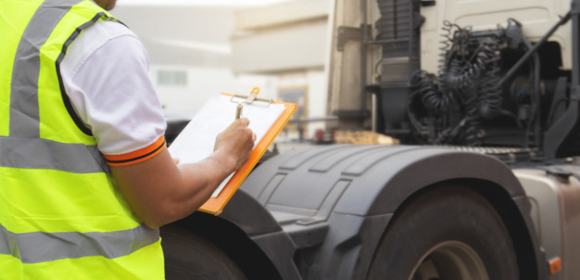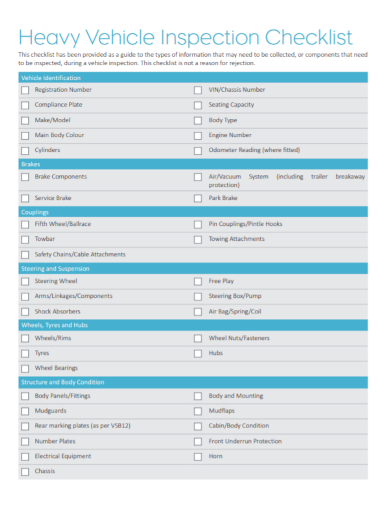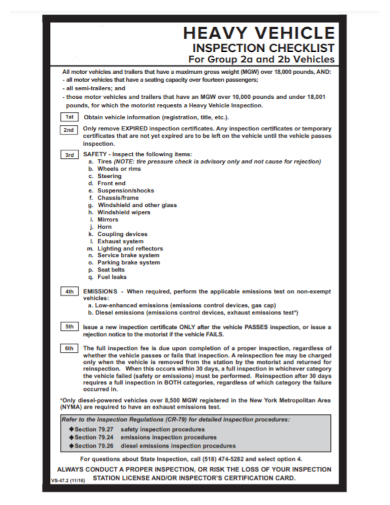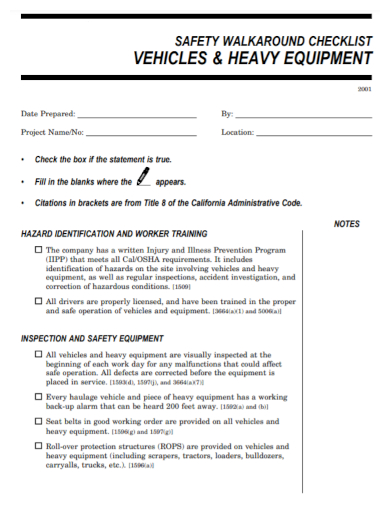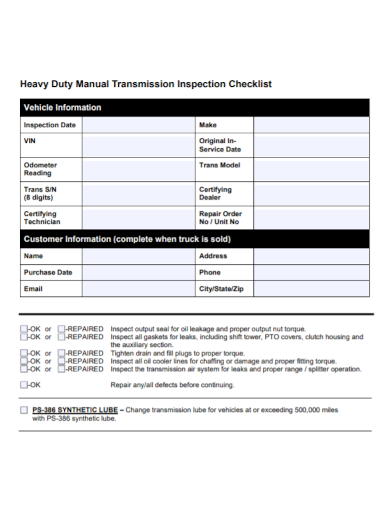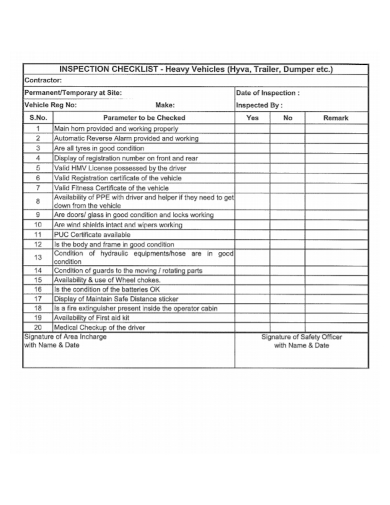Operating a heavy vehicle is largely different from using a regular vehicle. Often involves operating heavy machinery and hazardous materials, it’s really not like your usual car where you just have to make sure that you are driving properly on the freeway. Because of this, operators tend to be exposed to a wide variety of hazards not just in the worksite, but in the general vicinity as well. Because of it’s size and more industrial function, one has to make sure that every heavy vehicle that is to be operated is properly and fully maintained. One unfortunate mishap could lead to a huge accident that could affect not just the person operating, but the people around it as well.
Maintaining a heavy vehicle requires more accuracy and responsibility than trying to maintain a regular vehicle. Although mostly comprised of the same basic components, most of these are specialized for industrial use. Meaning it’s tailored for more heavy duty tasks in and around the worksite. A well maintained heavy vehicle not just make sure that the machine is operating full and well, it should also make sure that the operator and the people working around it are not so exposed to work related hazards. Of course, we don’t expect operators to know too much about the machine to be able to maintain it themselves. Most of the time, there are specialized mechanics who are properly equipped with the necessary skills to effectively repair and maintain it. Although they should really be knowledgeable about the unit that they are using. Being able to do routine inspections on their own is a widely invaluable skill to have. Suppose you want to do so. Inspect the heavy vehicle that you will be operating before actually using it. A good step to take is to have a heavy vehicle inspection checklist on hand. Check out these heavy vehicle inspection checklist samples listed below to get a pretty good idea of what this checklist should look like. You can also use these samples as guides or templates for when you’re actually starting to make your own checklist.
5+ Heavy Vehicle Inspection Checklist Samples
1. Heavy Vehicle Inspection Checklist
2. Heavy Motor Vehicle Inspection Checklist
3. Heavy Vehicle Equipment Inspection Checklist
4. Heavy Vehicle Duty Inspection Checklist
5. Heavy Vehicle Trailer Inspection Checklist
6. Heavy Vehicle Incident Inspection Checklist
What Is a Heavy Vehicle Inspection Checklist?
Vehicle inspection checklists let an individual inspect and assess the condition of a vehicle on their own. It helps identify various mechanical flaws and problems by providing an overview of a certain part or component along with its description and what its optimal condition should be. It also provides an outline of how to troubleshoot said component if ever it does not meet it’s optimal condition. Basically it’s like user’s manual, with with roughly steps and conditions on how to do some basic repairs and maintenance. For heavy vehicles, it’s basically the same thing, but tailored specifically for, you guessed it, heavy vehicles. Heavy vehicles are different from your regular vehicles as these machines are more often specialized to carry out heavier and more industrial tasks, which regular vehicles would not be able to handle. Heavy vehicle inspection checklists are also more specific and full of additional necessary details since it does take some additional skill and knowledge to be able to effectively maintain the machine. Overall, it’s a pretty important tool to make sure that motor vehicles, heavy or not, are in full operating condition.
What to Include in a Heavy Vehicle Inspection Checklist
Creating your own inspection checklist usually means that you are knowledgeable enough about the vehicle that you will be inspecting, or with all kinds of vehicles in general. As I’ve established, we don’t expect everyone to posses that much knowledge, we’ll leave that to the professionals. In that case, we suggest you use some of the templates and samples we have provided above, these should be more than enough help. If that’s not the case, and you really are knowledgeable enough, then stick around. We’ll be discussing the most basic components your checklist should cover, and a handful of tips that you can use.
- Contact information
It is important to have the contact details of the operator and the inspector present in the checklist. Information like name, contact numbers, email, and their signatures. If you did the inspection on your own, then put your name as both the operator and the inspector. - Identification
Aside from the details that you have listed, it is also important to have their identification reflected as well. It can be their driver’s license, government issued ID, registration, etc. - Specify vehicle details
Of course, every unit and model of vehicle is different from one another. Each require something specific that is most usually not found in other units. So it’s important to specify what unit or model or brand of the vehicle that you will be inspecting. This should also make sure that if any component or spare part needs replacement, you will be installing the compatible one. - Main inspection
This is now the main part of your checklist, because this is literally the checklist itself. Here are the most basic components that should require some maintenance.- Engine oil check
- Battery check
- Headlight and signal lights
- Tire treads
- Windshield wipers
- Belts in and around the hood of the vehicle
- Emission sticker is up to date
- Brake and rearview lights
- Brake test
Other more specific components should depend on the model and build of the heavy vehicle that you will be inspecting. Be sure to keep that in mind and is present in your checklist.
FAQs
What is considered a heavy vehicle?
A heavy vehicle is defined as a motor vehicle that has a gross vehicle mass greater than 4.5 tonnes.
Why is a vehicle inspection important?
The most obvious reason for a vehicle inspection is safety purposes.
What are heavy commercial vehicles?
Vehicles intended for the carriage of heavy duty goods and merchandise.
Owning a regular sized vehicle is already a lot of responsibility. What more can a heavy vehicle be. Maintaining your heavy machinery on your own is overall a really good practice. Not only does it keep the vehicle in proper shape, it also keeps the operator and the people around it away from worksite hazards.
Related Posts
FREE 23+ Party Checklist Samples in MS Word | Google Docs | Apple Pages | PDF
FREE 18+ Scheduling Checklist Samples in MS Word | Google Sheets | PDF
FREE 17+ Response Checklist Samples in MS Word | Google Docs | PDF
FREE 17+ Survey Checklist Samples in MS Word | Google Docs | PDF
FREE 18+ Background Checklist Samples in MS Word | Google Sheets | PDF
FREE 18+ Facilitator Checklist Samples in MS Word | Google Sheets | PDF
FREE 18+ Complaint Checklist Samples in MS Word | Google Sheets | PDF
FREE 18+ Internship Checklist Samples in MS Word | Google Docs | PDF
FREE 18+ Statement Checklist Samples in MS Word | Google Sheets | PDF
FREE 20+ Voluntary Checklist Samples in MS Word | Google Sheets | PDF
FREE 18+ Summary Checklist Samples in MS Word | Google Sheets | PDF
FREE 14+ Sponsorship Checklist Samples in MS Word | MS Excel | PDF
FREE 18+ Conference Checklist Samples in MS Word | Google Sheets | PDF
FREE 17+ Lesson Checklist Samples in MS Word | Google Sheets | PDF
FREE 18+ Progress Checklist Samples in MS Word | Google Docs | PDF
